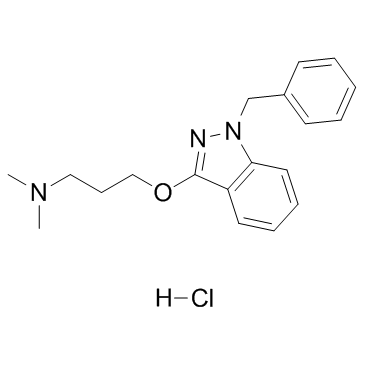Fluorescence quenching of biologically active carboxamide by aniline and carbon tetrachloride in different solvents using Stern-Volmer plots.
N R Patil, R M Melavanki, S B Kapatkar, K Chandrashekhar, H D Patil, Siva Umapathy
文献索引:Spectrochim. Acta. A. Mol. Biomol. Spectrosc. 79(5) , 1985-91, (2011)
全文:HTML全文
摘要
Fluorescence quenching of biologically active carboxamide namely (E)-2-(4-chlorobenzylideneamino)-N-(2-chlorophenyl)-4,5,6,7-tetrahydrobenzo[b]thiophene-3-carboxamide [ECNCTTC] by aniline and carbon tetrachloride (CCl4) quenchers in different solvents using steady state method and time resolved method using only one solvent has been carried out at room temperature to understand the role of quenching mechanisms. The Stern-Volmer plot has been found to be linear for all the solvents studied. The probability of quenching per encounter p (p') was determined in all the solvents and was found to be less than unity. Further, from the studies of rate parameters and life time measurements in n-heptane and cyclohexane with aniline and carbon tetrachloride as quenchers have been shown that, the phenomenon of quenching is generally governed by the well-known Stern-Volmer (S-V) plot. The activation energy Ea (or E'a) of quenching was determined using the literature values of activation energy of diffusion Ed and the experimentally determined values of p (or p'). It has been found that, the activation energy Ea (E'a) is greater than the activation energy for diffusion Ed in all solvents. Hence, from the magnitudes of Ea (or E'a) as well as p (or p') infer that, the quenching mechanism is not solely due to the material diffusion, but there is also contribution from the activation energy.Copyright © 2011 Elsevier B.V. All rights reserved.
相关化合物
| 结构式 | 名称/CAS号 | 分子式 | 全部文献 |
|---|---|---|---|
 |
盐酸苄达明
CAS:132-69-4 |
C19H24ClN3O |
|
Benzydamine N-oxygenation as an index for flavin-containing ...
2015-02-01 [Drug Metab. Pharmacokinet. 30(1) , 64-9, (2015)] |
|
Entrapment of human flavin-containing monooxygenase 3 in the...
2012-12-01 [Biochim. Biophys. Acta 1820(12) , 2072-8, (2012)] |
|
Drug oxygenation activities mediated by liver microsomal fla...
2014-07-15 [Biochem. Pharmacol. 90(2) , 159-65, (2014)] |
|
In vitro drug metabolism by C-terminally truncated human fla...
2012-02-15 [Biochem. Pharmacol. 83(4) , 551-8, (2012)] |
|
Effects of salinity acclimation on the pesticide-metabolizin...
2013-01-01 [Comp. Biochem. Physiol. C. Toxicol. Pharmacol. 157(1) , 9-15, (2013)] |